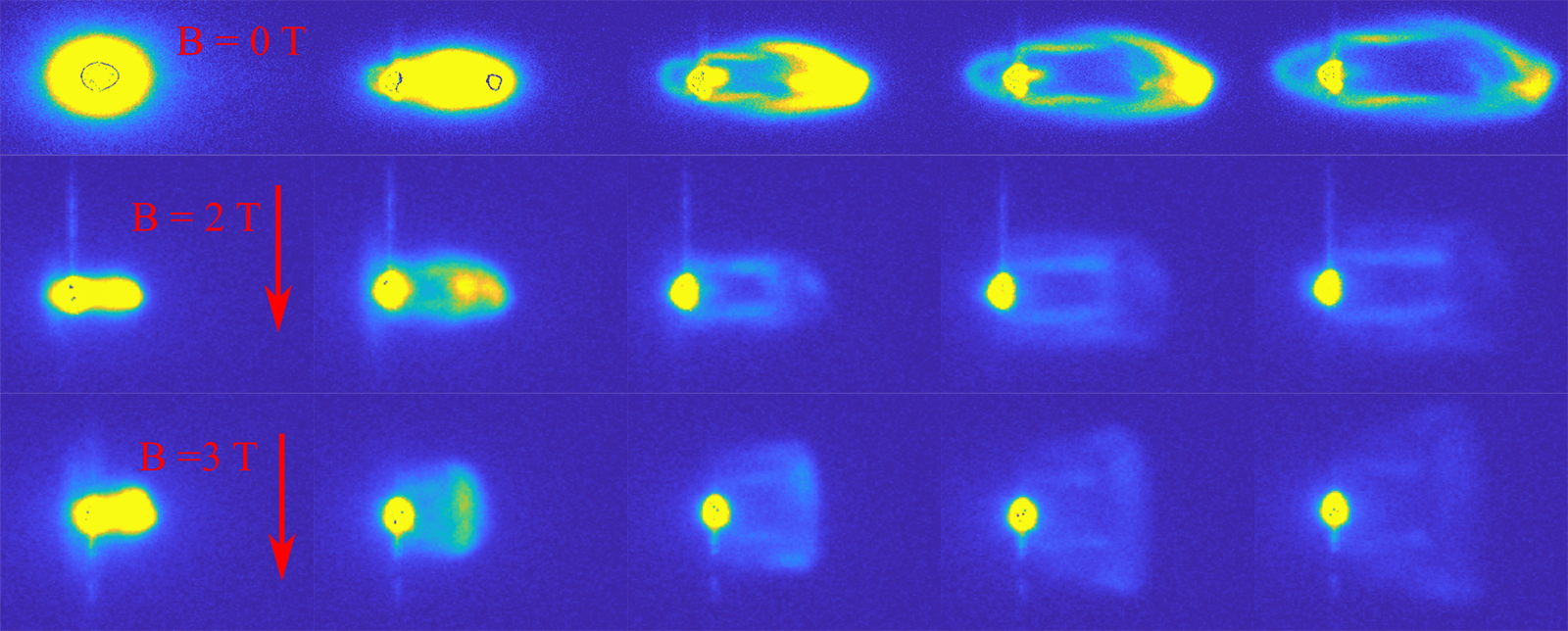
Stay Up to Date
Submit your email address to receive the latest industry and Aerospace America news.

The Plasmadynamics and Lasers Technical Committee works to apply the physical properties and dynamic behavior of plasmas to aeronautics, astronautics and energy.
Editor’s note: This article has been updated to correct the name of the university that conducted plasma actuator research with Xi’an Jiaotong University of China. It was China’s Air Force Engineering University
The year brought several advancements related to fundamental processes encountered in laser-induced plasmas and diagnostics. In January, researchers at Purdue University in Indiana demonstrated Thomson coherent microwave scattering to detect electron densities in small-size plasmas in rarified gases. In March, students from the University of Alabama in Huntsville conducted a laser plasma expansion experiment at the high magnetic field facility at Auburn University. They ablated and ionized a carbon rod target with a 280-millijoule laser pulse to investigate the effect of transverse magnetic fields, of up to 3 tesla, on resultant plasma plume expansion. In July, researchers from Texas A&M University explored the controllability of laser-energy deposition by simulating the combination of two laser beams with an offset. The 3D cross-sectional vorticity induced resulted in overall elongation of the high-temperature kernel, providing more control over the energy deposition structure.
Significant progress was made in hypersonics research. In January, scientists at the University of Arizona conducted the first comprehensive numerical study of electron gains and losses in hypersonic air flow. They simulated hypersonic flows with varying freestream conditions corresponding to Mach numbers 12-24 and dynamic pressures of 1-50 kilopascals interacting with a wedge. In March, researchers at the Center for Hypersonics and Entry Systems Studies at the University of Illinois Urbana-Champaign started test runs of Plasmatron X, the largest inductively coupled plasma wind tunnel in the U.S. In June, scientists at MetroLaser and Princeton University built a small, portable high-enthalpy 5-kilowatt radio frequency plasmatron for the development of new plasma diagnostic techniques and testing of thermal insulating materials for hypersonic flight and reentry. The installation provides a continuous plasma flow with a specific enthalpy of up to 20 megajoules per kilogram.
Further development of plasma actuators confirmed their promise for flow control, anti-icing and combustion enhancement. In February, the Air Force Engineering University and Xi’an Jiaotong University of China demonstrated a nanosecond pulsed surface plasma actuator array capable of promoting supersonic boundary layer transition, enhancing mixing in high-speed cavity flow, and controlling low Reynolds number subsonic/supersonic flow separation in a compressor cascade. Later in the year, the same team explored similar plasma sources for ice sensing, modulation of the ice accretion and ice removal. In September, they proposed a high-energy surface arc plasma actuator array to control a hypersonic shock-shock interaction.
Plasma-assisted propulsion researchers investigated the possibility of controlling combustion processes both in conventional burners as well as in detonation regimes. In May, researchers at Princeton University studied kinetic enhancement triggered by nanosecond dielectric barrier discharges on a dimethyl ether and oxygen mixture. Nonequilibrium plasma affects the low-temperature and high-temperature chemistry and controls the deflagration-to-detonation transition, which would enable advanced detonation engine development for power generation and propulsion.
Several groups were exploring plasma technologies for conversion of carbon dioxide and methane. In March, a Princeton University team built a new supersonic nonequilibrium plasma reactor for controlled methane reforming and hydrogen/carbon synthesis. The reactor uses pulsed spark plasma that can reach temperatures up to 4,000 kelvins. The energy efficiency of hydrogen production in a supersonic expanding flow was better than 19 kilowatt-hour per kilogram of hydrogen. In August, a team with members from the University of Lisbon in Portugal, the Laboratoire de Physique des Plasmas at Ecole Polytechnique in France, MIT, Eindhoven University of Technology in the Netherlands and the Dutch Institute for Fundamental Energy Research proposed a plasma-based system to produce and separate oxygen in the Martian atmosphere. Such technology could play a key role in developing life support systems for future Mars colonies, including the feedstock and chemicals needed to manufacture in-situ fuels, fertilizers and construction materials.
Contributors: Bernard Parent, Alexey Shashurin, Albina Tropina, Yun Wu and Gabe Xu
Stay Up to Date
Submit your email address to receive the latest industry and Aerospace America news.



